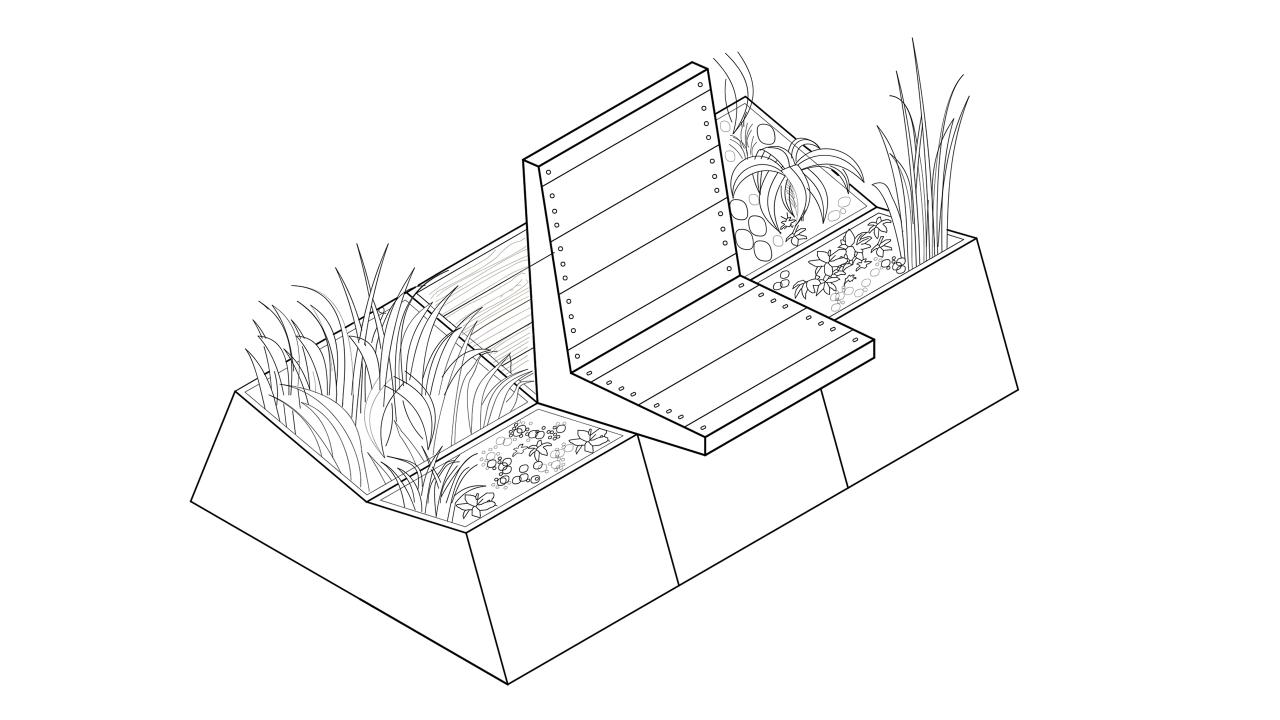Asli Eylem Kolbas
(Speculating) Dom Hans van der Laan’s (Irrational) Bench
Initial design proposal
Design objects are more than singular/non-referential beings; they are part of the environment they shape, as well as the historical context – like a spatial intervention, a street, a district, a community. So far, we had learnt that objects accommodate the humans as subjects. The typologies of furnitures we had until recently had found humans to be the only target in terms of their audience. However, it’s time to unlearn and add non-humans as subjects to the authors. This designed furniture which stems from an existing typology is a twist to its human-centred historical twin; while it can be communed in a complex, ever changing interior, architectural and even urban environment.
Design development and production process
The reference of the design is based on a church bench designed by Dutch monk and architect Dom Hans van der Laan in the 1960s with his theory of the 'plastic number'. The plastic number is a system of rational order on which van der Laan ruminated about, with the influence of the Modernism movement he was in. This system is driven by numbers and ratios. Although different elements from the original reference have been added to continue Dom Hans van der Laan's design principle, being liable to plastic number also helped in choosing materials and deciding on details.
The design, on the one hand, wants to point out the existing and remind the value in it. On the other hand, it cares for reversing this rational and human-oriented design approach. One of the most basic decisions to express this is to use two different materials. Here, cherry is used on the chair part to which the reference is applied exactly, while red oak is chosen for the rest of this bench and it is foreseen that they will be separated both in color and texture.
Then again, details are one of the key areas that question the nature of the design and lead to change. Throughout the design process, it was aimed to create new layers in the details while remaining true to the plastic number. In this respect, keeping in touch with the producer showed how much of a struggle it would take to understand the nature of the material, for it to be shared more-than-human as new subjects. Besides that, it played an important role in seeing that it lead to new perspectives when not just focusing on the macroform.




